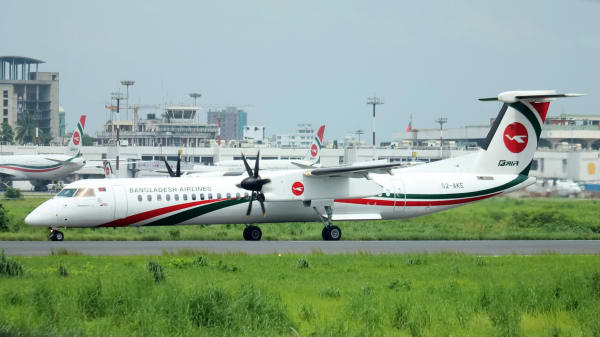The Importance of Weather Forecasting in Aviation
Weather forecasting is a vital factor in aviation that significantly impacts flight safety, efficiency, and the industry's overall success. It plays a pivotal role, considering the potential severe consequences posed by adverse weather conditions. Therefore, meteorological predictions guide key decisions—everything ranging from flight planning and route determination to emergency landings and fuel economy. This article delves into the importance of weather forecasting in aviation, reminding us why it's deemed such a crucial element in flight operations.
Deciphering Weather Forecasting in Aviation
Before diving into the importance, we must understand what weather forecasting in aviation entails. Simply put, it's the prediction of atmospheric conditions at a given site or area where an aircraft is set to operate. Examples of specific forecasts include wind direction and speeds, temperature gradients, precipitation, fog, and storms. Advanced technologies—radar systems, satellite imagery, advanced computing modeling, and meteorological drones—are usually deployed for these forecasts.
Why is Weather Forecasting Essential in Aviation?
Safety Measures
Safety is invariably the topmost priority in aviation. Unanticipated weather shifts like turbulence, icing, high winds, or visibility issues can jeopardize aircraft safety—both in the air and the ground. Timely and accurate weather forecasts provide pilots, air traffic controllers, and ground dispatchers critical data to ward off potential threats and ensure the safety of everyone on board.
Operational Efficiency
Weather forecasts provide crucial information that helps fuel efficiency and punctuality. Optimal routes can be chosen to exploit favorable winds or avoid stormy restraints, consequently reducing fuel consumption and flight time. Moreover, knowing the weather conditions can help avoid last-minute cancellations or delays, contributing to operational efficiency and customer satisfaction.
Informed Decision Making
Weather forecasting enables informed decision-making for various stakeholders in the aviation industry. Pilots use weather forecasts to decide if a flight should proceed or be canceled. Air traffic controllers use it to determine optimal routes and altitudes. Airport operators use it to manage ground operations. All these decisions pivot around real-time weather data.
Legal Obligations
Under international regulations controlled by bodies like the International Civil Aviation Organization (ICAO), it is mandated to have meteorological services in the aviation sector. So concrete is this obligation that weather conditions must be assessed and taken into account before each flight.
Weather Parameters Important in Aviation
Aviation weather forecasts focus on several weather parameters, each crucial in their own right. Here is a snapshot:
- Wind speed and direction: Influences takeoff, landing, and in-flight fuel consumption.
- Temperature: High temperatures can affect aircraft performance, reducing lift and increasing fuel consumption.
- Visibility: Crucial during takeoff and landing; fog, rain, or snow can severely lower visibility.
- Thunderstorms and turbulence: Can lead to severe aircraft damage and pose threats to passenger safety.
- Icing: Can alter aerodynamics by increasing weight and decreasing lift, potentially causing severe accidents.
With this understanding, it's clear that weather forecasting is a beneficial, critical tool in aviation, helping to maximize safety, efficiency, and helping meet legal regulations.
Aspects of Weather Forecasting in Aviation
Observations and Reporting
Observations and reporting form the foundation of weather forecasts. Airports around the world feature ground-based observation facilities to record parameters like wind speed and direction, temperature, and visibility. Observations are complemented by reports from airborne aircraft, allowing an understanding of the actual flying conditions.
Advanced Technology
Advanced technology like weather radar and satellite imagery significantly enhances the precision of weather forecasts. Weather radar is especially beneficial for monitoring precipitation, while satellite imagery aids in tracking larger meteorological developments like hurricanes or weather fronts.
Computer Modeling
Computer modeling is a keystone in weather prediction, providing a glimpse into future weather conditions. These models simulate weather on a global scale, giving meteorologists a valuable tool to inform their predictions. It's important to note though, the forecasts based on these models are not final and are subject to review and adjustment by human meteorologists.
The Future of Weather Forecasting in Aviation
The future of weather forecasting in aviation is steering towards further precision and reliability. Emerging technologies like AI and Machine Learning are poised to tremendously improve forecasts' accuracy. Moreover, enhancements in satellite technology and improved collaborative efforts globally will aid in making the process even more seamless.
Ultimately, weather forecasting is a critical lifeline for the aviation industry, given the tremendous value it adds to safety, efficiency, and decision-making processes. This underpins why continual efforts and investments are made in improving meteorologic services in the aviation sector. With technological advancements on the horizon, we can surely expect weather forecasting in aviation to take a giant leap towards improved proficiency and reliability.




